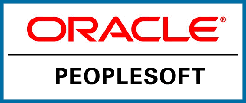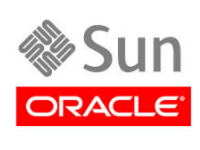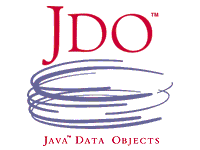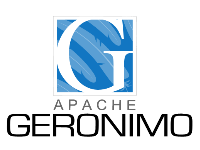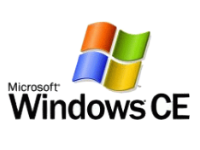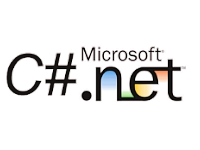Business Concept
Conceptual Model
In the most general sense, a model is anything used in any way to represent anything else. Some models are physical objects, for instance, a toy model which may be assembled, and may even be made to work like the object it represents. Whereas, a conceptual model is a model that exists only in the mind. Conceptual models are used to help us know and understand the subject matter they represent.
The term conceptual model may be used to refer to models which are formed after a conceptualization process in the mind. Conceptual models represent human intentions or semantics. Conceptualization from observation of physical existence and conceptual modeling are the necessary means human employ to think and solve problems. Concepts are used to convey semantics during various natural languages based communication. Since a concept might map to multiple semantics by itself, an explicit formalization is usually required for identifying and locating the intended semantic from several candidates to avoid misunderstandings and confusions in conceptual models.
Concept Overview
"Conceptual modeling is the activity of formally describing some aspects of the physical and social world around us for the purposes of understanding and communication."
A conceptual model's primary objective is to convey the fundamental principles and basic functionality of the system in which it represents. Also, a conceptual model must be developed in such a way as to provide an easily understood system interpretation for the models users. A conceptual model, when implemented properly, should satisfy four fundamental objectives.
we have identified nine common TQM practices:
- Enhance an individuals understanding of the representative system
- Facilitate efficient conveyance of system details between stakeholders
- Provide a point of reference for system designers to extract system specifications
- Document the system for future reference and provide a means for collaboration
Techniques
As systems have become increasingly complex, the role of conceptual modeling has dramatically expanded. With that expanded presence, the effectiveness of conceptual modeling at capturing the fundamentals of a system is being realized. Building on that realization, numerous conceptual modeling techniques have been created. These techniques can be applied across multiple disciplines to increase the users understanding of the system to be modeled. A few techniques are briefly described in the following text, however, many more exist or are being developed. Some commonly used conceptual modeling techniques and methods include; Workflow Modeling, Workforce Modeling, Rapid Application Development, Object Role Modeling, and Unified Modeling Language (UML).
- Data Flow Modeling :
-
Data Flow Modeling
Data flow modeling (DFM) is a basic conceptual modeling technique that graphically represents elements of a system. DFM is a fairly simple technique, however, like many conceptual modeling techniques, it is possible to construct higher and lower level representative diagrams. The data flow diagram usually does not convey complex system details such as parallel development considerations or timing information, but rather works to bring the major system functions into context. Data flow modeling is a central technique used in systems development that utilizes the Structured Systems and Analysis and Design Method (SSADM).
- Entity Relationship Modeling :
-
Entity Relationship Modeling
Entity-relationship modeling (ERM) is a conceptual modeling technique used primarily for software system representation. Entity-relationship diagrams, which are a product of executing the ERM technique, are normally used to represent database models and information systems. The main components of the diagram are the entities and relationships. The entities can represent independent functions, objects, or events. The relationships are responsible for relating the entities to one another. To form a system process, the relationships are combined with the entities and any attributes needed to further describe the process. Multiple diagramming conventions exist for this technique; IDEF1X, Bachman, and EXPRESS, to name a few. These conventions are just different ways of viewing and organizing the data to represent different system aspects.
- Event-Driven Process Chain :
-
Event-Driven Process Chain
The event-driven process chain (EPC) is a conceptual modeling technique which is mainly used to systematically improve business process flows. Like most conceptual modeling techniques, the event driven process chain consists of entities/elements and functions that allow relationships to be developed and processed. More specifically, the EPC is made up of events which define what state a process is in or the rules by which it operates. In order to progress through events, a function/ active event must be executed. Depending on the process flow, the function has the ability to transform event states or link to other event driven process chains. Other elements exist within an EPC, all of which work together to define how and by what rules the system operates. The EPC technique can be applied to business practices such as resource planning, process improvement, and logistics.
- Joint Application Development :
-
Joint Application Development
The Dynamic Systems Development Method (DSDM) uses a specific process called Joint Application Design (JAD) to conceptually model a systems life cycle. JAD is intended to focus more on the higher level development planning that precedes a projects initialization. The JAD process calls for a series of workshops in which the participants work to identify, define, and generally map a successful project from conception to completion. This method has been found to not work well for large scale applications, however smaller applications usually report some net gain in efficiency.
- Place/ Transition Net :
-
Place/ Transition Net
Also known as Petri Nets, this conceptual modeling technique allows a system to be constructed with elements that can be described by direct mathematical means. The petri net, because of its nondeterministic execution properties and well defined mathematical theory, is a useful technique for modeling concurrent system behavior, i.e. simultaneous process executions.
- State Transition Modeling :
-
State Transition Modeling
State transition modeling makes use of state transition diagrams to describe system behavior. These state transition diagrams use distinct states to define system behavior and changes. Most current modeling tools contain some kind of ability to represent state transition modeling. The use of state transition models can be most easily recognized as logic state diagrams and directed graphs for finite state machines.
- Technique Evaluation and Selection :
-
Technique Evaluation and Selection
Because the conceptual modeling method can sometimes be purposefully vague to account for a broad area of use, the actual application of concept modeling can become difficult. To alleviate this issue, and shed some light on what to consider when selecting an appropriate conceptual modeling technique, the framework proposed by Gemino and Wand will be discussed in the following text. However, before evaluating the effectiveness of a conceptual modeling technique for a particular application, an important concept must be understood, Comparing conceptual models by way of specifically focusing on their graphical or top level representations is shortsighted. Gemino and Wand make a good point when arguing that the emphasis should be placed on a conceptual modeling language when choosing an appropriate technique. In general, a conceptual model is developed using some form of conceptual modeling technique. That technique will utilize a conceptual modeling language that determines the rules for how the model is arrived at. Understanding the capabilities of the specific language used is inherent to properly evaluating a conceptual modeling technique, as the language reflects the techniques descriptive ability. Also, the conceptual modeling language will directly influence the depth at which the system is capable of being represented, whether it be complex or simple.
- Mental Model :
-
Mental Model
Further information: Mental model, Representation (psychology), and Cognitive model In cognitive psychology and philosophy of mind, a mental model is a representation of something in the mind, but a mental model may also refer to a nonphysical external model of the mind itself.
- Metaphysical Models :
-
Metaphysical Models
A metaphysical model is a type of conceptual model which is distinguished from other conceptual models by its proposed scope. A metaphysical model intends to represent reality in the broadest possible way. This is to say that it explains the answers to fundamental questions such as whether matter and mind are one or two substances; or whether or not humans have free will. Conceptual model vs. semantics model
- Entity-Relationship Model :
-
Entity-Relationship Model
In software engineering, an entity-relationship model (ERM) is an abstract and conceptual representation of data. Entity-relationship modeling is a database modeling method, used to produce a type of conceptual schema or semantic data model of a system, often a relational database, and its requirements in a top-down fashion. Diagrams created by this process are called entity-relationship diagrams, ER diagrams, or ERDs.
Entity-relationship models have had wide application in the building of information systems intended to support activities involving objects and events in the real world. In these cases they are models that are conceptual. However, this modeling method can be used to build computer games or a family tree of the Greek Gods, in these cases it would be used to model concepts.
- Domain Model :
-
Domain Model
A domain model is a type of conceptual model used to depict the structural elements and their conceptual constraints within a domain of interest (sometimes called the problem domain). A domain model includes the various entities, their attributes and relationships, plus the constraints governing the conceptual integrity of the structural model elements comprising that problem domain. A domain model may also include a number of conceptual views, where each view is pertinent to a particular subject area of the domain or to a particular subset of the domain model which is of interest to a stakeholder of the domain model. Like entity-relationship models, domain models can be used to model concepts or to model real world objects and events.
Quality Service
Intelligent Quotes
A solid working knowledge of productivity software and other IT tools has become a basic foundation for success in virtually any career. Beyond that, however, I don't think you can overemphasise the importance of having a good background in maths and science.....
Founder , Microsoft Solutions
"Every software system needs to have a simple yet powerful organizational philosophy (think of it as the software equivalent of a sound bite that describes the system's architecture)... A step in thr development process is to articulate this architectural framework, so that we might have a stable foundation upon which to evolve the system's function points. "
"All architecture is design but not all design is architecture. Architecture represents the significant design decisions that shape a system, where significant is measured by cost of change"
"The ultimate measurement is effectiveness, not efficiency "
Accountability in Human Resource Management.
"It is argued that software architecture is an effective tool to cut development cost and time and to increase the quality of a system. "Architecture-centric methods and agile approaches." Agile Processes in Software Engineering and Extreme Programming.
& Springer Berlin Heidelberg, 2008
"Java is C++ without the guns, knives, and clubs "
Cited in: David Parsons (2001) Object Oriented Programming with C++.
"When done well, software is invisible"
"Our words are built on the objects of our experience. They have acquired their effectiveness by adapting themselves to the occurrences of our everyday world."
Atoms of silence.
"I always knew that one day Smalltalk would replace Java. I just didn't know it would be called Ruby. "
Giles Bowkett (2007)
"The best way to predict the future is to invent it."
At a 1971 meeting of PARC
"In 30 years Lisp will likely be ahead of C++/Java (but behind something else)"
"Possibly the only real object-oriented system in working order. (About Internet)"
"Simple things should be simple, complex things should be possible. "
The Wiki Way: Quick Collaboration on the Web
"Software engineering is the establishment and use of sound engineering principles in order to obtain economically software that is reliable and works efficiently on real machines."
"Model Driven Architecture is a style of enterprise application development and integration, based on using automated tools to build system independent models and transform them into efficient implementations. "
"The Internet was done so well that most people think of it as a natural resource like the Pacific Ocean, rather than something that was man-made. When was the last time a technology with a scale like that was so error-free? The Web, in comparison, is a joke. The Web was done by amateurs. "
2012
"Software Engineering Economics is an invaluable guide to determining software costs, applying the fundamental concepts of microeconomics to software engineering, and utilizing economic analysis in software engineering decision making. "
Software engineering economics. Abstract.
"Ultimately, discovery and invention are both problems of classification, and classification is fundamentally a problem of finding sameness. When we classify, we seek to group things that have a common structure or exhibit a common behavior. "
"Perhaps the greatest strength of an object-oriented approach to development is that it offers a mechanism that captures a model of the real world. "
Software Engineering with Ada
"The entire history of software engineering is that of the rise in levels of abstraction. "
In his talk "The Limits of Software.
"The amateur software engineer is always in search of magic, some sensational method or tool whose application promises to render software development trivial. It is the mark of the professional software engineer to know that no such panacea exist "
-Robert A. Maksimchuk.
Core Values ?

Agile software development is a group of software development methods based on iterative and incremental development, where requirements and solutions evolve through collaboration.....
moreCore Values ?

Total Quality Management / TQM is an integrative philosophy of management for continuously improving the quality of products and processes. TQM is based on the premise that the quality of products and .....
moreCore Values ?

We are more than code junkies. We're a company that cares how a product works and what it says to its users. There is no reason why your custom software should be difficult to understand.....
moreCore Values ?

With extensive software development experience, our development team is up for any challenge within the Great Plains development environment. our Research works on IEEE international papers are consider....
moreCore Values ?

We have a proven track record of developing and delivering solutions that have resulted in reduced costs, time savings, and increased efficiency. Our clients are very much ....
moreCore Values ?

We simply dont release anything that isnt tested well. Tell us something cant be tested under automation, and we will go prove it can be. We create tests before we write the complementary production software......
moreCore Values ?

If a customer needs technical support for one of our products, no-one can do it better than us. Our offices are open from 9am until 9pm Monday to Friday, and soon to be 24hours. Unlike many companies, you are able to....
moreCore Values ?

We have a reputation for process genius, fanatical testing, high quality, and software joy. Whatever your business, our methods will work well in your field. We have done work in Erp Solutions ,e-commerce, Portal Solutions,IEEE Research....
more
Why Choose Us ?

The intellectual commitment of our development team is central to the leonsoft ability to achieve its mission: to develop principled, innovative thought leaders in global communities.
Read More
Today's most successful enterprise applications were once nothing more than an idea in someone's head. While many of these applications are planned and budgeted from the beginning.
Read More
We constantly strive to redefine the standard of excellence in everything we do. We encourage both individuals and teams to constantly strive for developing innovative technologies....
Read More
If our customers are the foundation of our business, then integrity is the cornerstone. Everything we do is guided by what is right. We live by the highest ethical standards.....
Read More





